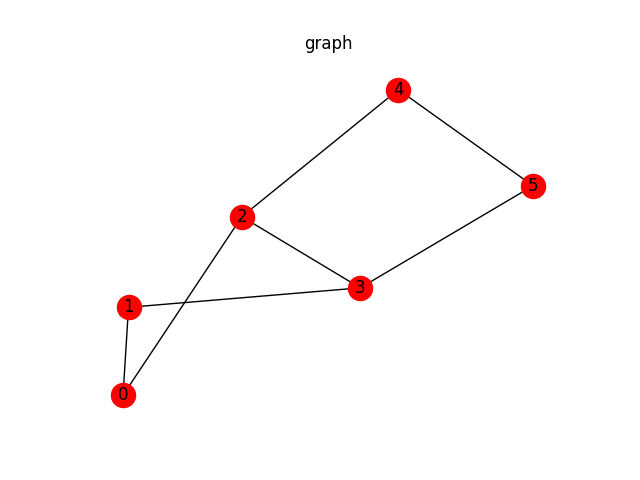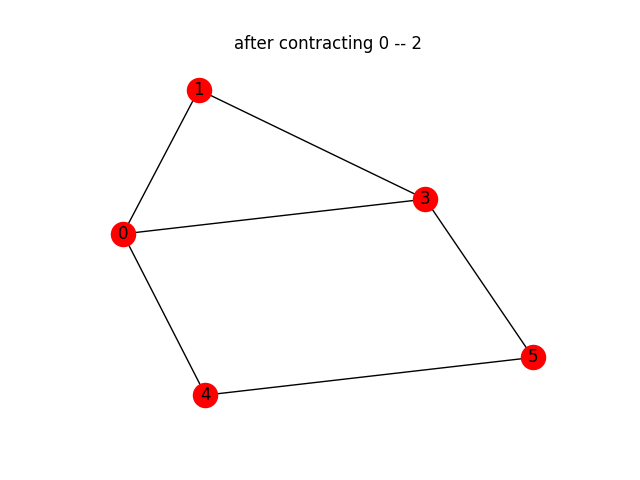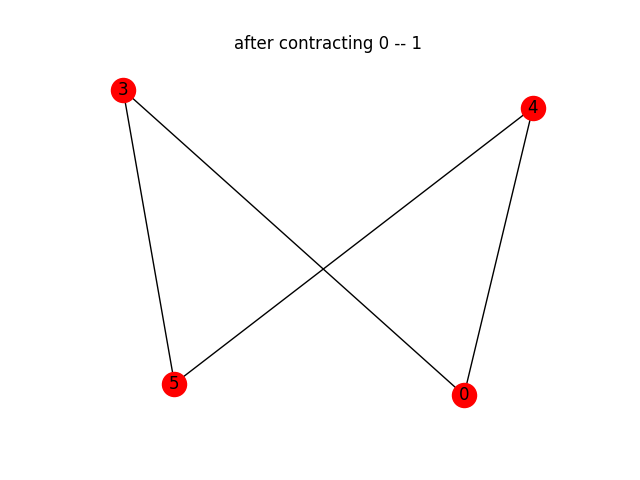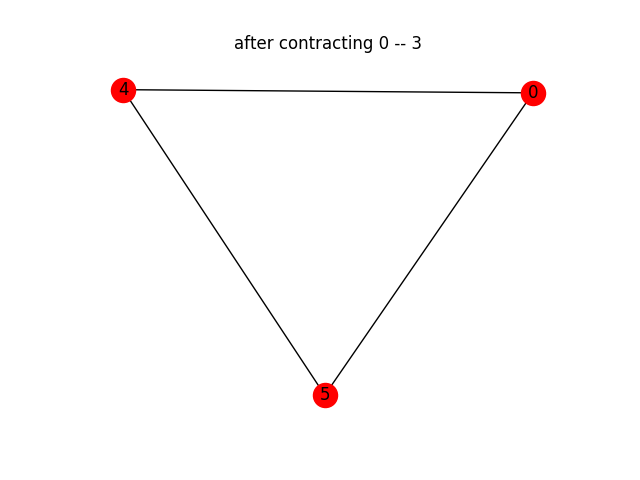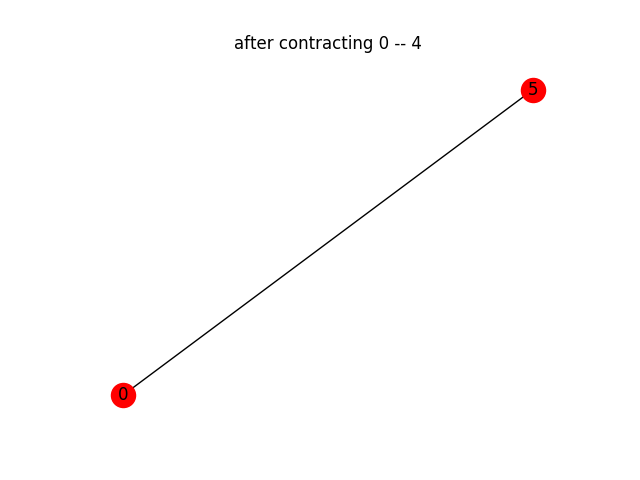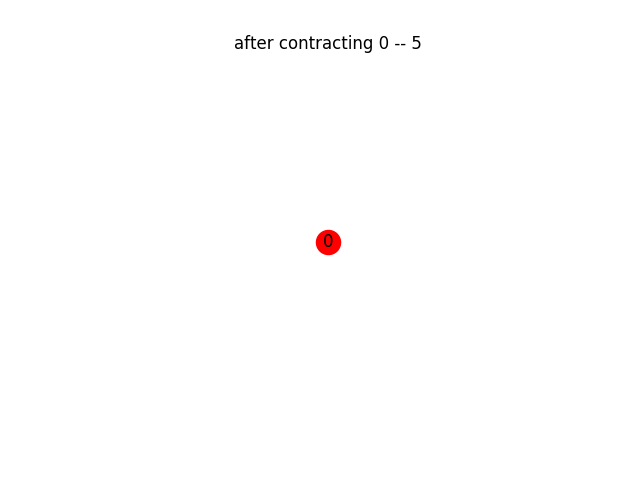Edge Contraction Graph¶
Contract the edges of an arbitrary graph and call callbacks when edges and nodes are merged
Out:
contraction graph: 2
e 0
u 0 cv 2
cu 0 v 2
contract edge 0
merge nodes 0 2
contract edge done 0
contraction graph: 1
e 1
u 0 cv 1
cu 0 v 1
contract edge 1
merge nodes 0 1
merge edges 4 2
contract edge done 1
contraction graph: 3
e 2
u 1 cv 3
cu 0 v 3
contract edge 4
merge nodes 0 3
contract edge done 4
contraction graph: 4
e 3
u 2 cv 4
cu 0 v 4
contract edge 3
merge nodes 0 4
merge edges 5 6
contract edge done 3
contraction graph: 0
e 4
u 2 cv 3
cu 0 v 0
contraction graph: 5
e 5
u 3 cv 5
cu 0 v 5
contract edge 5
merge nodes 0 5
contract edge done 5
contraction graph: 0
e 6
u 4 cv 5
cu 0 v 0
from __future__ import print_function
import nifty
import nifty.graph
import pylab
def generateGrid(gridSize):
def nid(x, y):
return x*gridSize[1] + y
G = nifty.graph.UndirectedGraph
g = G(gridSize[0] * gridSize[1])
for x in range(gridSize[0]):
for y in range(gridSize[1]):
u = nid(x,y)
if x + 1 < gridSize[0]:
v = nid(x+1, y)
g.insertEdge(u, v)
if y + 1 < gridSize[1]:
v = nid(x, y+1)
g.insertEdge(u, v)
return g
class MyCallback(nifty.graph.EdgeContractionGraphCallback):
def __init__(self):
super(MyCallback, self).__init__()
def contractEdge(self, edgeToContract):
print(" contract edge",edgeToContract)
def mergeEdges(self, aliveEdge, deadEdge):
print(" merge edges",aliveEdge, deadEdge)
def mergeNodes(self, aliveNode, deadNode):
print(" merge nodes", aliveNode, deadNode)
def contractEdgeDone(self, contractedEdge):
print(" contract edge done", contractedEdge)
# generate grid graph
g = generateGrid((3,2))
# the callback
callback = MyCallback()
# the edge contraction graph
cg = nifty.graph.edgeContractionGraph(g,callback)
# plot the graph
pylab.figure()
pylab.title('graph')
nifty.graph.drawGraph(g)
pylab.show()
# - here we just contract all edges of the original graph
counter = 0
for e in g.edges():
# get the endpoints of e in the original
u,v = g.uv(e)
# get the nodes in the merged graph
cu = cg.findRepresentativeNode(u)
cv = cg.findRepresentativeNode(v)
print("contraction graph:", cv)
print("e",e,)
print(" u",u, "cv",v)
print(" cu",cu," v",cv)
if(cu != cv):
# the edge is still alive
# since the endpoints are still in
# different clusters
ce = cg.findRepresentativeEdge(e)
# lets contract that edge
cg.contractEdge(ce)
# plot the graph
pylab.figure()
pylab.title('after contracting %d -- %d'%(cu, cv))
nifty.graph.drawGraph(cg)
counter += 1
pylab.show()
else:
# the edge is not alive any more
tmp = cg.nodeOfDeadEdge(e)
assert tmp == cv
Total running time of the script: ( 0 minutes 0.305 seconds)
